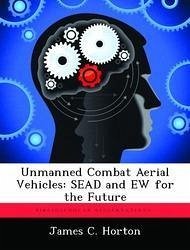
Quest for the High Ground: The Development of Sead Strategy
Versandkostenfrei!
Versandfertig in über 4 Wochen
52,99 €
inkl. MwSt.

PAYBACK Punkte
26 °P sammeln!
The danger of surface-to-air defenses grows as the nature of US conflicts continues to change. Ground based defenses promise attrition while forcing air forces into standoff range. Furthermore, ground-based defenses cost less and require less training than airborne systems; definite advantages for third world adversaries. Coalition performance in the Gulf War showed future adversaries that they would suffer tremendously by trying to match symmetrically US airpower capability. US strategists should expect enemy systems in the future aimed at causality sensitivity in situations where US vital in...
The danger of surface-to-air defenses grows as the nature of US conflicts continues to change. Ground based defenses promise attrition while forcing air forces into standoff range. Furthermore, ground-based defenses cost less and require less training than airborne systems; definite advantages for third world adversaries. Coalition performance in the Gulf War showed future adversaries that they would suffer tremendously by trying to match symmetrically US airpower capability. US strategists should expect enemy systems in the future aimed at causality sensitivity in situations where US vital interests are not at stake. These issues illuminate the need to make defense suppression a planning priority to ensure air superiority. Although air superiority relies on defeating both the air-to-air and surface-to-air defense, this study examines only one element in the quest for air superiority -- the suppression of enemy air defenses (SEAD). This study determines how SEAD operational objectives change with the nature and maturity of an air campaign and categorize SEAD objectives and strategy.














